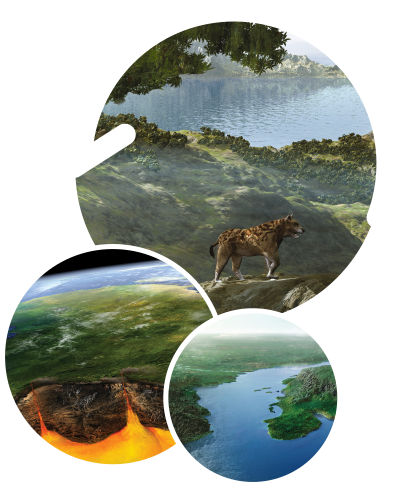
Human Paleobiomics leads us
back to our ancestors. And lets
us learn a lot about our future.
How have we grown and evolved from our ancestors? And how might we look and act in the future? Scientists who seek answers to these questions work in the field of human paleobiomics. To understand how modern-day humans evolved from their ancestors, these scientists compare bone and tooth growth in people today with growth patterns in early humans who lived hundreds of thousands and even millions of years ago.
© GEO Magazine
The time machine


Far ahead. In looking backwards.
The scientists who work in human paleobiomics do research that goes back in time to help us better understand our future. They use very advanced microscopes and computers to compare different early human species to each other, and to understand the impact of climate and environment on human development. Their findings give us some fascinating ideas not only about the past, but also about the future direction of human evolution.

Updating evolutionary research.
The emphasis on studying tiny features in bones and teeth for clues about how we’ve grown and evolved from our ancestors and how might we look and act in the future is what sets human paleobiomics apart from other fields of evolution research.

Two guys with one idea.
Human paleobiomics was launched by
Dr. Timothy Bromage, a professor at the
New York University College of Dentistry,
and Dr. Friedemann Schrenk, a professor
at the Senckenberg Research Institute
in Frankfurt, Germany.
+
What is human paleobiomics?
+
What makes human paleobiomics different from other fields of research?
+
Who developed the field
of human paleobiomics?
Human what?
Learn more about human paleobiomics. Discover how scientists study bones and teeth for fascinating clues about human development. Check out this website for some examples of the exciting work of scientists in this field.



Ethiopia
The remains of a skeleton of an early human who lived more than three million years ago were found in Ethiopia.
+ Lucy
Malawi
Scientists working in Malawi discovered teeth from early humans who lived two-and-a-half million years ago. These discoveries help us understand how early human life evolved in Africa.

+ Homo rudolfensis
+ Blantyre: College of Medicine
+ Zomba: Chancellor College
+ Karonga: Cultural & Museum Centre

Spain
Human and bear skeletal remains were discovered in caves in Spain. The remains are between 400,000 and 700,000 years old.
+ Homo antecessor
+ Institut Català de Paleontologia
© 2014 Human Paleobiomics Hard Tissue Research Program by T.G. Bromage and F. Schrenk
© 2014 Human Paleobiomics Hard Tissue Research Program
Some related sites
Partners & Friends
+
+
+
+
+
+
+
+


